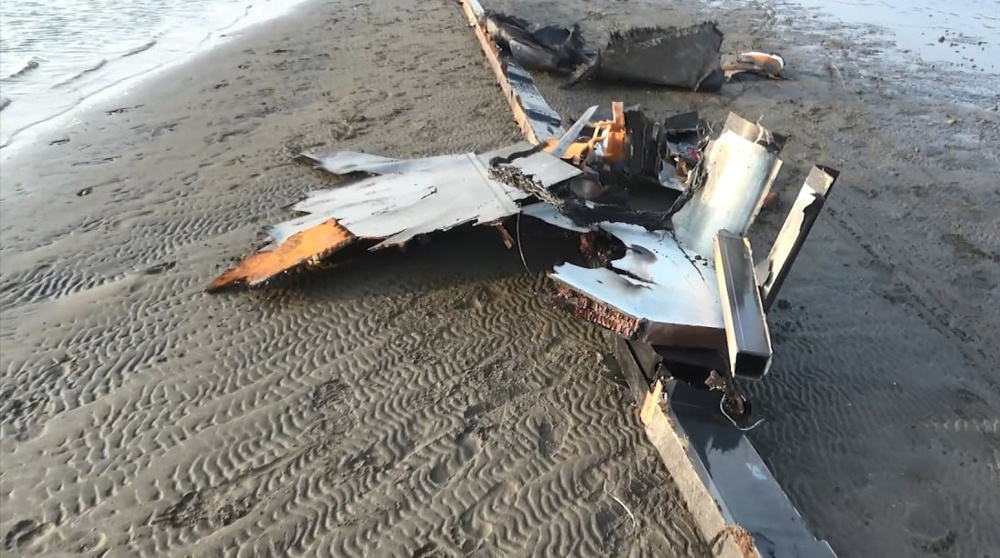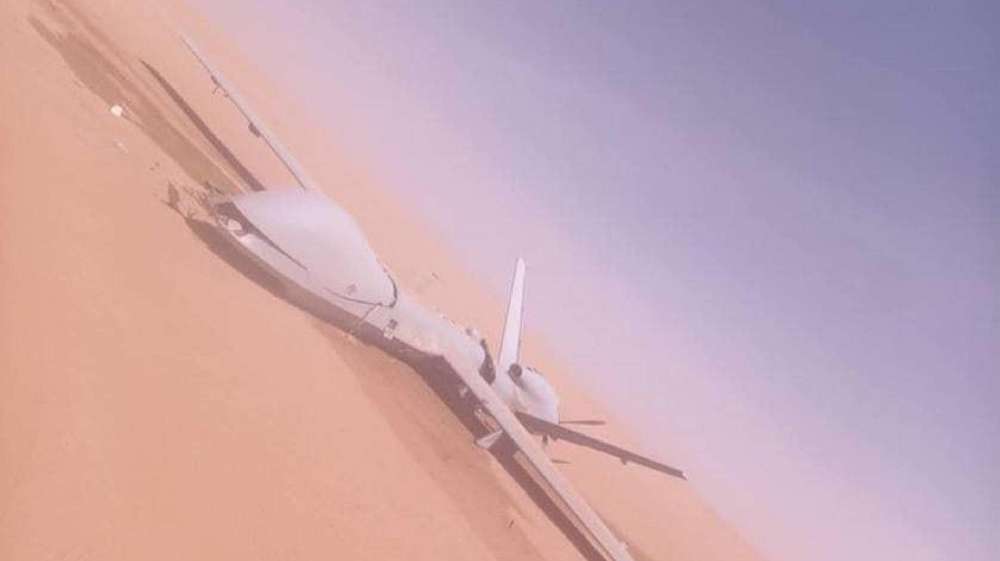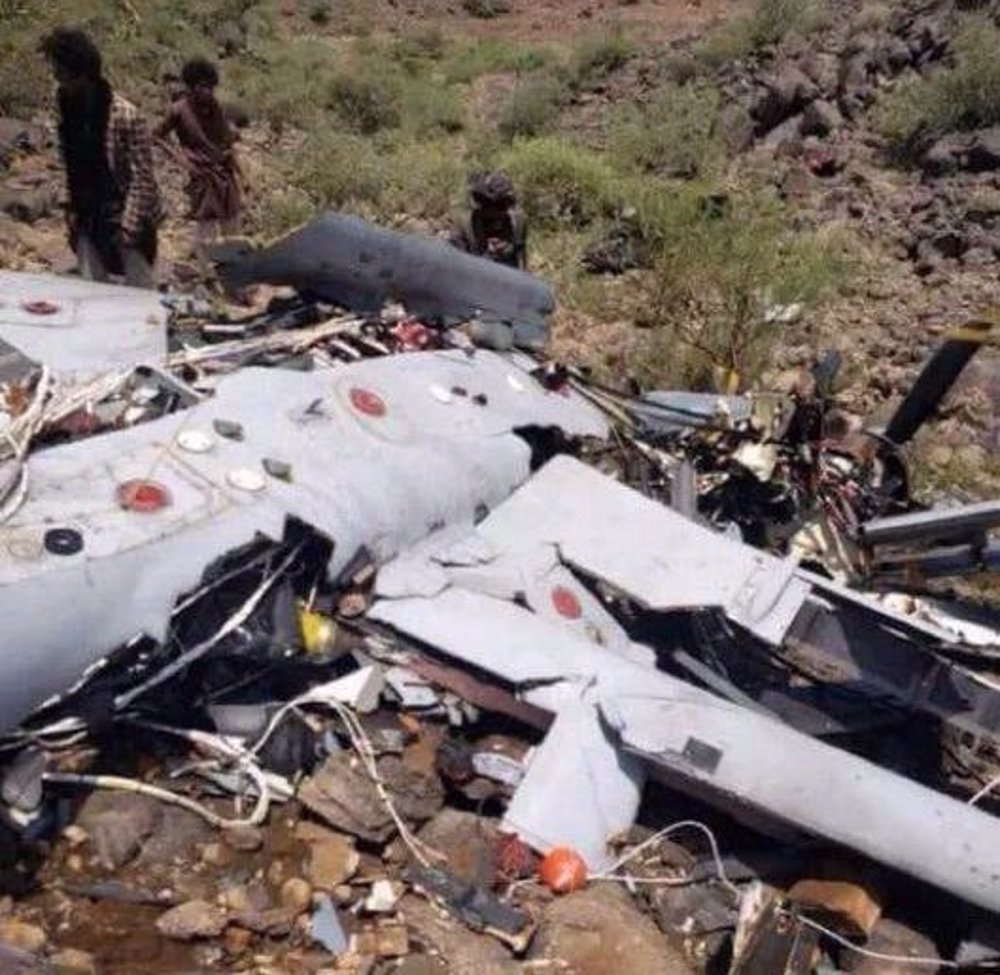By Ivan Kesic

The spokesperson for the Yemeni Armed Forces (YAF), Brigadier General Yahya Saree in a statement on Tuesday said the ninth drone had been shot down while carrying out hostile operations in Saada.
The total number of much-hyped Reaper drones downed by the Yemeni military since October 2023 has now risen to nine, demonstrating the efficacy of Yemeni military hardware.
The downing of expensive American drones shows that the United States, apart from the sea, is losing the initiative in the air as well, and has no answer to Yemeni anti-aircraft missiles.
Yemen launched regional air and naval operations against the Israeli regime and the US and their allies in solidarity with the people and resistance in Palestine, vowing to continue these operations until the genocidal war in Gaza ends.
What is the MQ-9 Reaper?
Developed by General Atomics and introduced in 2007 as an upgraded version of the MQ-1 Predator, the MQ-9 Reaper is a multi-role, remotely piloted drone used by the US Air Force for intelligence, surveillance, reconnaissance (ISR), and precision strike missions.
It's among the most advanced American unmanned aerial vehicles (UAVs), featuring high-tech specifications, including an advanced radar system, high-resolution cameras, and sensors capable of scanning a 360-degree area.
Its sensors include infrared, daylight TV, and laser designators, and can carry up to 1,700 kg of payload, including AGM-114 Hellfire II air-to-surface missiles, AIM-9 Sidewinder air-to-air missiles, and GBU-12 Paveway II laser-guided bombs.
The MQ-9 measures 11 meters in length with a wingspan of 20 meters, has a flight range of about 2,000 kilometers and can reach altitudes of up to 15,000 meters and a maximum speed of around 310 km/h.
It can operate in harsh weather conditions and fly for up to 27 hours, transmitting data to multiple aircraft or ground locations, and in addition to remote piloting, it is also capable of autonomous flight operations.
In addition to the United States as the main user, drones of this type are also in service in the United Kingdom, France, Italy, Spain, Poland, the Netherlands, India and Japan.
An export agreement was concluded with Canada, Greece and the United Arab Emirates, and the manufacturer has earned between $10-15 billion from sales so far.
The US Air Force operates these drones from several air bases in the countries of the Arabian Peninsula, while for operations over Yemen, they most often take off from the Chabelley and Lemonnier air bases in nearby Djibouti.
The official cause for operating bases in the latter country is the alleged "fight against piracy and terrorism," but the real reason is the control of East Africa and West Asia, especially the strategically important Bab-el-Mandeb Strait.
The malignant American role is evidenced by the fact that during the aggression against Gaza, at least six US MQ-9 Reaper drones were flown over the Gaza Strip to assist Israel with reconnaissance efforts.
Also, their shootings or observations over the sky of Yemen always coincided with Anglo-American airstrikes on that country, which has been the case for the last three days as well.
The MQ-9 Reaper, along with its control room, missiles and other equipment, is valued at $30 million, which means that at least $360 million worth of drones have been lost so far in Yemen alone.
Chronology of MQ-9 drone shootings
During the Yemen war, Yemen shot down three American MQ-9 Reapers, one in October 2017 and two more in June and August 2019, and since the beginning of the genocidal war against Gaza, an additional series of nine shootings have followed.
The first MQ-9 Reaper was shot down on November 8, 2023, when it was conducting hostile activities and reconnaissance over Yemeni territorial waters as part of US military support for the Zionist entity.
The Yemeni armed forces said in a statement that the drone was shot down by an "appropriate weapon," asserting their legitimate right to defend the country and counter all hostile threats.
"We can confirm that a US military MQ-9 remotely-piloted aircraft was shot down," a senior US defense official said, claiming it was in "international airspace over international waters off the coast of Yemen."

The second was shot down on February 19, 2024, after which the military media distributed footage showing the precise tracking and the direct hit with a locally-made surface-to-air missile, leading to its fiery descent and debris on the ground.
US officials initially said it was unclear whether it had been shot down or crashed on its own, but later admitted a Yemeni surface-to-air missile near the port of Al Hudaydah shot it down.
The third Reaper drone was shot down by a missile on April 26, according to Yemeni military sources, in the skies of Saada province while it was executing hostile missions.
The US Defense Department spokesperson again tried to downplay the Yemeni role, claiming that the drone “crashed and the investigation is ongoing,” without elaborating further.
However, Yemeni forces released footage showing the missile launch and downing of the US drone with the cameraman shouting the slogans of the Ansarallah resistance movement.

May was the most disastrous month for the Americans as three more MQ-9 Reapers were shot down, starting with May 16 when it was targeted over Marib province.
Brigadier General Saree in his remarks at the time stated that the drone was targeted with a locally-made surface-to-air missile.
Another shooting down followed on May 21 over the skies of Al-Bayda province in central Yemen, followed by another on May 29 over Marib province.
US officials have worn themselves out with denials, downplays and excuses, and have tried to keep some of the shooting downs quiet, without making concrete statements.
The Yemeni reports were not disputed because they provided material evidence in the form of photos and footage, and the last downing showed a drone in the desert in an almost intact state.
The footage showed the tracking and monitoring of the drone, followed by the launch of a locally-made surface-to-air missile that hit the drone directly, causing it to fall.
A locally-made surface-to-air missile shot down the seventh on August 4, when it was conducting hostile activities in the skies of Saada province, after which local sources published a photo gallery of the wreck.

Of the last two, the eighth was shot down on September 7 over Marib province and the ninth on September 10 over Saada province.
The shootings were announced by Saree who, as in all previous cases, reiterated that these operations were in support of the Palestinian nation and resistance in Gaza.
Lessons learned
All nine of these reaper shootings have much in common in terms of enemy reconnaissance operations, Yemeni weapons used, and official reactions from both sides.
In all cases, MQ-9 Reapers were shot down in Yemeni airspace, i.e. over their territory or waters, as evidenced by photographs and footage of the wrecks.
It was never a random hit by anti-aircraft guns, but by an advanced mysterious missile, which Yemeni military sources describe as an "appropriate weapon" or an "air-to-air missile."
The MQ-9 Reaper does not have a stealth design, but it contains highly sophisticated electronic warfare systems to jam radars and anti-aircraft missiles, making any individual shoot down an embarrassment.
The embarrassment is even greater considering the twelve shootings in Yemen alone, a country that does not have the most modern air defense systems and most likely uses a loitering missile with infrared or optical guidance to shoot MQ-9 Reapers down.
US officials tried to downplay this shame with repetitive textbook statements, which they gave to the Western media until Yemeni sources provided clear and irrefutable evidence.
In all cases when they gave statements, it always started with claims about a "fall with unknown causes" and continued with "unprovoked shootings" supposedly "outside Yemeni territory," not counting those cases that were completely covered up.

No comments:
Post a Comment